Cottage Cheese is a valuable food that a person should consume regularly. Considered one of the oldest foods, Cottage Cheese is able to provide everything necessary for the body - from vitamins of protein, essential amino acids, to vitamins of milk and fat. Cottage Cheese is the end product of yogurt with lactic acid bacteria, in which whey is released and you get a rich protein product.
Cottage Cheese is a crumbly, grainy structure with a soft lactic acid its smell and taste are mostly sweet. Salty cheese is obtained by adding 1 to 1.5% table salt. Today the market offers cottage Cheese in various packages with different amounts of water content, fat, salt, acidity.
Under terms of the clotting of milk, are obtained two types of cheese - yellow or rennet cheese from skim or whole milk. There is a difference between rennet and cheese. The second is more yellowish, with more fat and a heavier, slightly sweet taste.
It is important to know that Cottage Cheese is rich in protein and low in fat. After egg whites, it is the largest source of protein. Cottage Cheese is easily assimilated by the digestive system and is recommended for food by many. Specifically, Cottage Cheese depends on the type of raw material you obtained the milk and whey from. Compared to factors that cause protein to curdle, rennet curd is more acidic and prone to thermal precipitation. Depending on the fat content, full cream, light and skimmed cottage cheese, is appreciated as diet food.
It is difficult to trace when and where Cottage Cheese was actually first made. It is known only that this product was already being consumed millennia ago. According to legend, the first time Cottage Cheese was made, our ancestors were trying to preserve milk for longer, putting it in the stomach of a slaughtered animal. That is where the milk is transformed into cheese under the influence of enzymes in the stomach. Even in those times, people mixed curd with butter and receiving a canned product that has greater durability.

Today, Cottage Cheese is prized as food all over the world - India, England, Canada, USA, France, Sweden, Turkey. Greeks love to eat Cottage Cheese for breakfast with fried bread or added to pasta, while in Sweden, it is used in confectionery products - for making traditional Ostkaka cheesecake, which is eaten with jam and cream.
Composition of Cottage Cheese
Cottage Cheese is an extraordinary dietary product. It gives the body amino acids, protein, calcium, phosphorus, iron, magnesium, milk sugars. Lipotropic substances, large amounts of phosphorus and calcium salts and the amino acid methionine help reduce the percentage of fat in the liver and support its work. It contains phosphoric salts, B vitamins and 20 amino acids with a significant proportion of them being irreplaceable. Milk protein is casein, albumin and globulin, and the choline in it are very helpful. 200 grams of Cottage Cheese is equal to 35 grams of protein. The percentage of fat in full cream cheese is 18%, half-fat - 9%, and low-fat - from 1 to 4%.
100 g of cottage cheese contains: 14.1 g protein, 0, 5 grams of fat and 3.8 grams of carbohydrates.

100 g of half-fat cottage cheese contains: 16.2 g protein, 3, 7 g fat, 3.7 carbs.
Selection and storage of Cottage Cheese
Curd is a product with a limited life span. It easily breaks, and therefore must be consumed within 12 hours if not stored in refrigerator or up to 36 hours if it is kept in the refrigerator. When you choose a cottage cheese in the store read its contents carefully and note the expiration date. The color of good cheese should range from white to slightly creamy, but in no case more intense a yellow or blue tint.
If the taste is sour and Cottage Cheese has a "cutting" taste, it is a sign that it is off. Its consistency should be uniform - no more fluid and less dense areas, and slightly oily. Real Cottage Cheese does not clump completely, stands in lumps and does not crumble too much. To store Cottage Cheese for longer in the refrigerator, put it in a glass container with a few lumps of sugar. The storage temperature of this product should not be more than +8 degrees.

Cottage cheese in cooking
Cottage Cheese is a versatile culinary product - can be used for both savory dishes and a lot of sweets. Cottage Cheese can be seasoned with spices according to taste - parsley, savory, dill, thyme, curry, chili, turmeric, pepper and paprika, add oil, vinegar or olive oil and get an excellent appetizer. Combined with boiled eggs, or mayonnaise, cottage cheese is no less delicious. It can safely be mixed with onions, garlic and vegetables of your choice.
For cake, Cottage Cheese is used to obtain mainly creams. It is prepared with many different Cheesecakes - with nuts, citrus fruits, chocolate, etc. In Lithuania, Latvia, Estonia and Russia small desserts even come packaged with cottage-type cheese. In Iceland, Cottage Cheese is called "Skyr" and comes in buckets as its creamy texture is emphasized. Traditional Swedish cheesecake is made with cottage cheese, cream, sugar, eggs, almonds, baked and served with various jams. At home, you can easily prepare your own Cottage Cheese.
Cottage Cheese with leaven
Put milk to boil, then put it in another dish, in a large pot with cold water to cool quickly. Watch the temperature and once at around 35-40 ° C, add to it 2-3 tablespoons yogurt and cover with a clean cloth. Leave in a warm place for 3-4 hours. Once the milk starts to thicken, heat it slowly on the stove until curdling. Strain the resulting Cottage Cheese in a cheesecloth or gauze.

Cottage Cheese without leaven
Put milk in enameled container and to each liter of it, add 1 tsp of calcium lactate. Stir and heat until it’s almost boiling. Remove it from heat and allow to cool, then strain. Cottage Cheese with no leaven is very rich in calcium salts and is very useful, especially for small children.
Benefits of Cottage Cheese
Many are the benefits of regular consumption of curd. The minerals in it participate in the formation of bone, hemoglobin and maintain the nervous system in good condition. Methionine and choline in the Cottage Cheese protect against the development of atherosclerosis. Proteins consist of its essential sulfur-containing amino acids such as methionine, cystine, and has proven anti- hepatites. Because of valuable amino acids Cottage Cheese is an important food in different diets.
Especially useful for patients with biliary and liver diseases, because of that, Cottage Cheese is often called the "nurse of the liver." Cottage Cheese proteins are partially related to phosphorus and calcium, which helps them better treatment in the stomach and small intestine, which helps the body to absorb very high.
Desalinated fresh cheese is recommended in diseases of the bones, in atherosclerosis, tuberculosis of the lungs and obesity because of its high calcium content. Cottage cheese provides the absorption of calcium and phosphorus from the bones in the right proportions. Against high cholesterol, in a reduced cholesterol diet, the presence of Cottage Cheese is mandatory because it has a very low content of cholesterol.
Curd is a useful and important food for infants and adolescents. It is a loyal sidekick in the fight against excess weight. To enhance your metabolism, make a monthly day of detoxing with cottage cheese, which absorbs toxins. During the day eat 100 g cottage cheese 4 times, even add a few drops of honey. For skin injuries, apply a compress of slightly warmed Cottage Cheese.
Cottage Cheese is an excellent means of beautification. You can make a face mask to highlight a radiant complexion and balance the secretion, clean and fix fat cells and return skin elasticity. For this purpose, prepare a mixture of 2 tablespoons cottage cheese, one egg yolk and a few drops of hydrogen peroxide. Apply gently on the face, let it act while it dries and remove.
Dangers of Cottage Cheese
Practically, there is no proven harm from the consumption of cheese. The only prerequisite is to not overdo consumption, it’s recommended daily dose is about 200 g. The only risk from the consumption of Cottage Cheese arises if it is fresh or has been corrupted. In such a case allergic reactions may arise and your stomach may be upset.
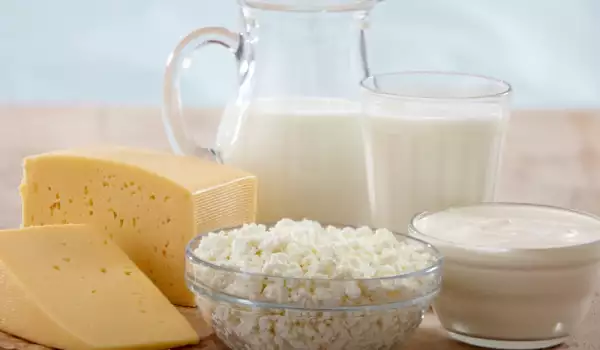

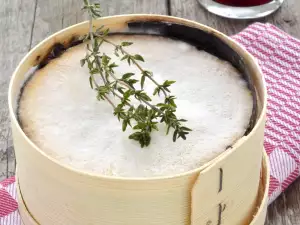


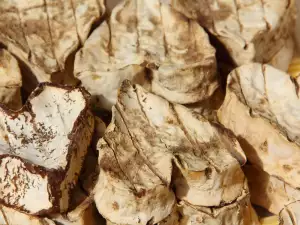
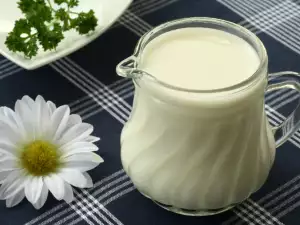



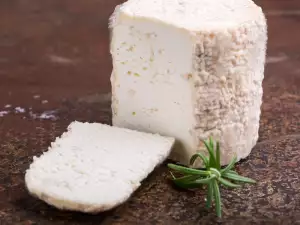








Comments